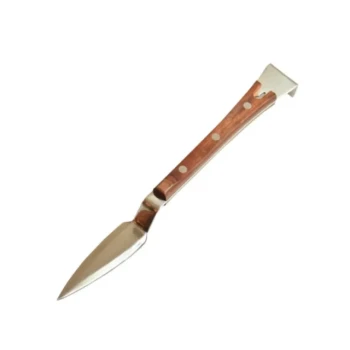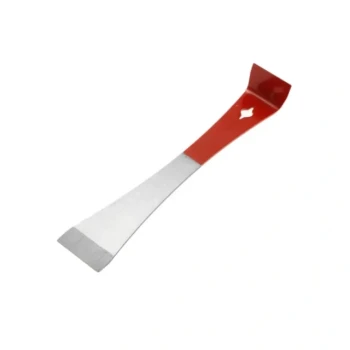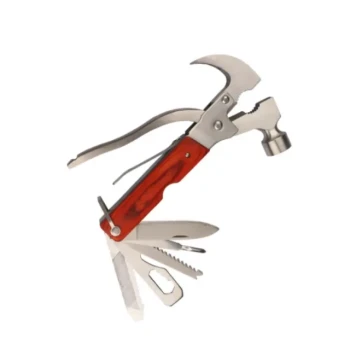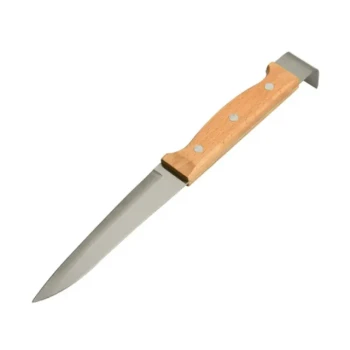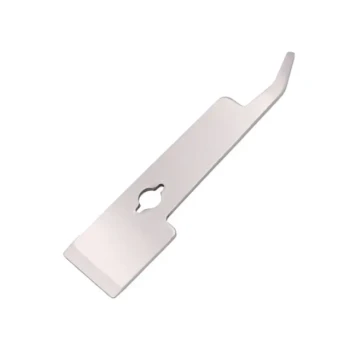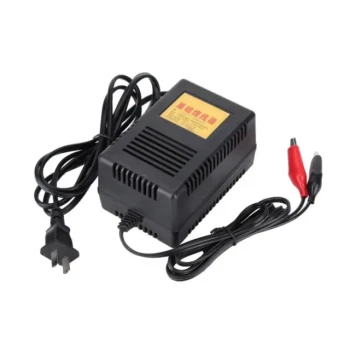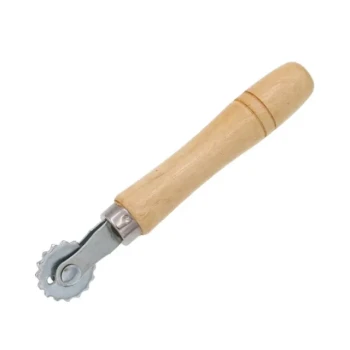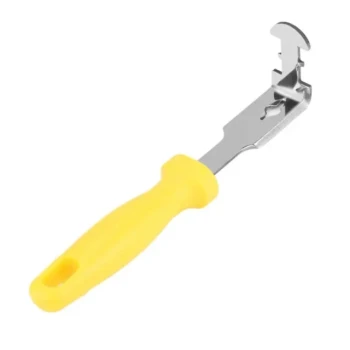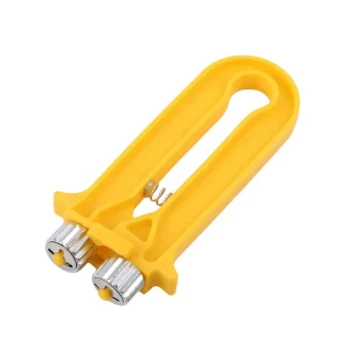To successfully transfer frames from a nucleus hive, you need a hive tool for prying frames loose, a smoker to calm the bees, and an entrance reducer to protect the newly established colony. You must also wear appropriate protective gear and have the complete destination hive ready before you begin the transfer.
Your goal is not just to move the bees, but to do so with minimal stress to the colony. The right tools and a clear process are essential for ensuring the bees can quickly adapt and thrive in their new home.
Essential Tools for the Transfer
The actual transfer requires a few specialized tools. Each one serves a critical purpose in making the process smooth for both you and the bees.
The Hive Tool
A hive tool is a non-negotiable piece of equipment. It is a simple, crowbar-like tool used for prying and scraping.
Bees use a sticky substance called propolis to seal every crack and seam inside their hive, essentially gluing the frames in place. The hive tool gives you the leverage needed to gently break this seal and loosen the frames without jarring them.
The Smoker
A smoker is used to deliver cool, white smoke to the bees, which helps to keep them calm during the inspection and transfer.
The smoke masks the bees' alarm pheromones, preventing a colony-wide defensive response. It also encourages them to gorge on honey, which makes them more docile and less inclined to sting.
Protective Gear
Even with a calm colony, stings can happen. Protective gear is for your safety and confidence.
A full beekeeping suit or a simple jacket and veil, along with gloves, will protect you from stings. This allows you to move deliberately and calmly, which in turn keeps the bees more settled.
Key Equipment for the New Hive
Beyond the hand tools, you must have the new hive completely assembled and ready before you start the transfer. The nucleus colony will be moved into this larger, permanent home.
The Hive Body and Frames
The hive body (also called a deep or brood box) is the main chamber of the new hive.
It must be filled with a full complement of frames. You will place the 5 frames from the nucleus hive in the center, then add new frames (typically with foundation or drawn comb) to fill the remaining space on either side.
The Bottom Board, Inner Cover, and Outer Cover
These components form the floor and ceiling of the new hive. The bottom board is the base, the inner cover provides proper ventilation and space, and the outer cover (or telescoping cover) protects the hive from the elements.
The Entrance Reducer
An entrance reducer is a small wooden block that limits the size of the hive entrance.
A new colony is small and has fewer guard bees, making it vulnerable to robbing from stronger colonies or pests. Reducing the entrance creates a smaller, more defensible doorway, giving the colony a secure start.
Understanding the Trade-offs: Common Mistakes to Avoid
A successful transfer depends on technique as much as it does on tools. Avoiding common errors is critical for the long-term health of the colony.
Mistake 1: Disorganizing the Brood Nest
The frames in a nucleus hive are arranged in a specific order, with brood (developing bees) in the center and food stores (honey and pollen) on the outside.
Always maintain the original order and orientation of the frames when moving them. Placing them out of order forces the bees to expend significant energy reorganizing their nest, which slows down colony growth.
Mistake 2: Leaving Empty Space
A hive body is designed to hold a specific number of frames (usually 8 or 10).
Never leave a large gap or an empty slot inside the hive body. The bees will fill this empty space with irregular, problematic burr comb instead of building on the provided frames, creating a mess that is difficult to manage later.
Mistake 3: A Rushed or Rough Transfer
Dropping frames, shaking bees off aggressively, or working too quickly can distress the colony and potentially injure or kill the queen.
Work slowly and deliberately. When moving a frame, lift it straight up and place it gently into the new hive. If bees remain in the nuc box, you can give it a firm but gentle shake over the new hive to dislodge them.
Making the Right Choice for Your Goal
Your approach should be guided by the ultimate goal of establishing a healthy, productive colony.
- If your primary focus is a smooth, low-stress transfer: Prepare all your equipment in advance so you can work efficiently without interruption, and use your smoker correctly to keep the bees calm.
- If your primary focus is long-term colony establishment: Pay close attention to frame order, place the nuc frames in the center of the new box, fill all remaining space with new frames, and install the entrance reducer immediately after the transfer.
Ultimately, a successful transfer sets the stage for the entire season, giving your new colony the secure and organized foundation it needs to flourish.
Summary Table:
| Essential Tool | Primary Purpose |
|---|---|
| Hive Tool | Pry frames sealed with propolis from the nuc box. |
| Smoker | Calm bees by masking alarm pheromones. |
| Entrance Reducer | Protect the new, vulnerable colony from robbing. |
| Protective Gear | Ensure beekeeper safety and confidence during the transfer. |
Ready to equip your apiary for success? A smooth nucleus hive transfer is the first step to a thriving colony. HONESTBEE supplies commercial apiaries and beekeeping equipment distributors with the high-quality, durable tools needed for professional beekeeping operations. From hive tools to complete hive setups, our wholesale-focused offerings ensure you have the right equipment for the job.
Contact HONESTBEE today to discuss your wholesale supply needs and set your colonies up for a productive season.
Visual Guide

Related Products
- HONESTBEE Advanced Ergonomic Stainless Steel Hive Tool for Beekeeping
- HONESTBEE Professional Long Handled Hive Tool with Precision Cutting Blade
- Professional Stainless Steel Pry-Bar Hive Tool
- HONESTBEE Professional Multi-Functional Hive Tool with Ergonomic Wood Handle
- HONESTBEE Premium Italian Style Hive Tool with Hardwood Handle
People Also Ask
- What are some common uses of a hive tool? Essential Multi-Purpose Tool for Every Beekeeper
- Why do hive tools have a hole? Unlock the Secret to Efficient Beekeeping
- What tools are used for cleaning frames? A Beekeeper's Simple 4-Tool Guide
- What is the hole in a hive tool for? A Multi-Tool for Apiary Repairs and Maintenance
- What are the features of a regular hive tool? The Essential Multi-Tool for Every Beekeeper




